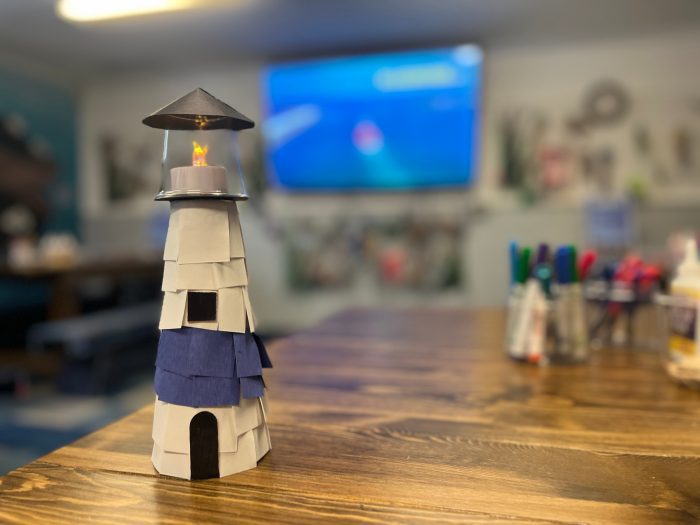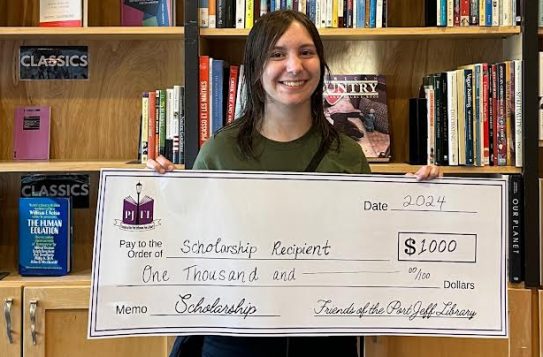Ongoing
Huntington Summer Arts Festival
The 59th annual Huntington Summer Arts Festival returns to Heckscher Park, 2 Prime Ave., Huntington from June 21 to Aug. 24, Wednesdays to Saturdays at 8 p.m., and Sundays at 7 p.m. The 10-week festival will feature over 40 live performances including dance, theater and music. Bring seating. Held rain or shine. Free. For a list of scheduled performers, visit www.huntingtonarts.org. 631-271-8423
Thursday July 18
Huntington Manor Fireman’s Fair
Long Island’s largest Fireman’s Fair at the Henry L. Stimson Middle School, 401 Oakwood Rd., Huntington Station, and adjoining Peter Nelson Park continues tonight from 6 to 11 p.m., July 19 from 6 p.m. to midnight, and July 20 from 5 p.m. to midnight. Featuring amusement rides, games, live musical entertainment, food. Fireworks on July 19 and 20. P.O.P bracelets for the rides are $40. 631-427-1629, ext. 4.
Dennis Cannataro Concert Series
The Dennis Cannataro Family Summer Concert Series continues at the Smithtown Library, 1 North Country Road, Smithtown with Radio Active (80s/90s/2000s) tonight at 7:30 p.m. No registration required. 631-360-2480 ext. 150
Harborside Concerts
Harborside concerts continue at the Show Mobile at Harborfront Park, 101-A East Broadway, Port Jefferson tonight at 7 p.m. with the Ed Travers Band (Jimmy Buffet Tribute). Bring seating. 631-473-4724
Music in the Park
The Greater Middle Country Chamber of Commerce presents Music in the Park at Veterans Park, Boyle Road, Selden with live music by Foreign Journey (Foreigner/Journey tribute band) starting at 7 p.m. Bring seating. 631-681-8708
Community Band Concert
The Northport Community Band will host concerts at the Robert W. Krueger Bandshell in Northport Village Park tonight, July 25 and Aug. 1 starting at 8:30 p.m. Free. Bring seating. Rain location is Northport High School. www.ncb59.org
Friday July 19
Huntington Manor Fireman’s Fair
See July 18 listing.
Anne Frank Memorial Ceremony
Huntington Town Supervisor Ed Smyth, in conjunction with the Suffolk Y JCC, will host the Town of Huntington’s 13th Annual Anne Frank Memorial Ceremony at Arboretum Park, 48 Threepence Drive, Melville, home of the Anne Frank Memorial Garden, from 10 a.m. to noon. This year’s event will feature Holocaust Survivor Rosalie Simon and students who participated in Suffolk Y JCC’s Names, Not Numbers program with music by Toby Tobias. Refreshments will be served. 631-351-3296.
Third Friday at the Reboli
Join Dr. Marc Fasanella as he returns to The Reboli Center, 64 Main St., Stony Brook for an illustrated lecture on seminal concepts of how humanity can engage with and implement ecologically enlightened, artful, advanced concepts of community development and land use from 6:30 to 8:30 p.m. Free to the public and no reservations are required to attend. Light snacks and refreshments will be offered for your enjoyment. 631-751-7707
Musical Moments
Musical Moments in Kings Park returns to Russ Savatt Park, 14 Main St., Kings Park from 7:30 to 9 p.m. with a concert by Day Trippers courtesy of the Kings Park Civic Association. Weather permitting. 516-509-7231
Happenings on Main Street
Northport Arts Coalition presents Happenings on Main Street, free concerts at the Northport Village Park Gazebo at the harbor Friday evenings at 7 p.m. through Aug. 30. Tonight’s performance will feature Annie Mark. Bring seating. Weather permitting. 631-261-1872
Heart Tribute Concert
Theatre Three, 412 Main St., Port Jefferson continues its summer concert series with Bad Animals — The Heart Tribute at 8 p.m. is the next best thing to the real thing. Lead vocalist Daena D delivers a stunningly accurate recreation of Ann Wilson’s soaring signature vocals, while Gina D successfully captures the charismatic guitar and trademark vocals of Nancy Wilson. Tickets are $55. To order, call 631-928-9100 or visit www.theatrethree.com.
Saturday July 20
Huntington Manor Fireman’s Fair
See July 18 listing.
Deepwells Art & Craft Festival
Deepwells Farm, 2 Taylor Lane, St. James presents a Summer Art & Craft Festival today and July 21 from 10 a.m. to 6 p.m. with artisans featuring original art, pottery, jewelry, fiber, candles, handmade soap and lotions, gourmet food and more with kids activities, food and music. Free admission. 631-307-0477
Superheroes of the Sky
Sweetbriar Nature Center, 62 Eckernkamp Drive Smithtown presents Superheroes of the Sky from 11 a.m. to noon. Take a walking tour with Jim while he feeds the Center’s Birds of Prey and tells you about their incredible adaptations that help them survive in the wild. You’ll be seeing and learning about bald eagles, turkey vultures, owls, hawks and many more. Fee is $10 per adults, $5 per child under the age of 12. To register, visit www.sweetbriarnc.org. 631-979-6344
Open Mic Day Concert
Port Jefferson Station/Terryville Chamber of Commerce will host an Open Mic Day Concert in the Train Car Park, corner of Route 112 and Nesconset Highway, Port Jefferson Station at 4 p.m. featuring performances by bands and singers. Bring seating. Rain date is July 21. 631-759-8850
Concert on the Lawn
As part of its annual Summer Concert Series, The North Shore Community Band will present an outdoor concert at Wading River Congregational Church, 2057 North Country Road, Wading River at 7 p.m. Enjoy an evening of patriotic favorites. www.northshorecommunityband.org
The Brooklyn Bridge in Concert
Theatre Three, 412 Main St., Port Jefferson welcomes The Brooklyn Bridge in concert at 8 p.m. Enjoy their greatest hits including “The Worst that Could Happen,” “Welcome Me Love,” “Blessed is the Rain,” “You’ll Never Walk Alone” and “Your Husband, My Wife.” Tickets are $65. To order, call 631-928-9100 or visit www.theatrethree.com.
Sunday July 21
Deepwells Art & Craft Festival
See July 20 listing.
Sea Glass Festival
The Whaling Museum, 301 Main St., Cold Spring Harbor hosts its 2nd annual Seaglass Festival from 10 a.m. to 5 p.m. The indoor/outdoor event will feature a Sea Glass of the Year contest, glass artists, vendors and exhibitors, presentations on glass bottle history and sea glass identification as well as sea glass art workshops (extra fee). Admission fee is $15 is advance at cshwhalingmuseum.com, $20 at the door. 631-367-3418, www.cshwhalingmuseum.org
Huntington Independence Day
The Huntington Militia hosts a Huntington Independence Day event at the Arsenal Museum, 425 Park Ave., Huntington and Village Green from noon to 4 p.m., with a re-enactment of the news of the Declaration of Independence in 1776 at 1 p.m. Featured events include musket and cannon drills, practice musket drills for children, period craft, cooking demonstrations and tours of the Arsenal. Free. Rain date is August 4. 631-223-8017, www.huntingtonmilitia.com
Wind Down Sundays
The popular summer concert series returns to Hap’s historic Red Barn at Frank Melville Memorial Park, 1 Old Field Road, Setauket with a performance by Free Range featuring Cathy Rose Salit at 5:30 p.m. Bring seating. 631-689-6146, www.frankmelvillepark.org
Celebrate St. James Concert Series
Celebrate St. James continues its summer concert series at Celebrate Park, 369 Lake Ave., St. James with Fat Nicky & The Snacks from 6 p.m. to 9 p.m. The series continues every Sunday through Aug. 18. Free. Bring seating. 631-984-0201, www.celebratestjames.org
Harry Chapin Tribute Concert
Heckscher Park’s Chapin Rainbow Stage, 2 Prime Ave., Huntington hosts the annual “Just Wild About Harry” Chapin tribute concert at 7 p.m. Eighteen acts comprised of nearly three dozen of Long Island’s top musicians and songwriters will take to the stage that bears his name to honor the late Grammy Award-winning songwriter, humanitarian and anti-hunger activist. Free. Bring seating. 631-425-2925, 631-271-8423
Village Green Summer Concert
Summer concerts return to the Stony Brook Village Center every Sunday at 7 p.m. in front of the Stony Brook Post Office, 111 Main Street, Stony Brook through Aug. 18. Tonight’s performance will feature Common Ground. Bring seating. In the case of rain, the concerts will be cancelled. 631-751-2244, www.wmho.org
Monday July 22
Outdoor Hula Hooping
Comsewogue Public Library, 170 Terryville Road, Port Jefferson Station hosts an evening of outdoor hula hooping from 6 to 7 p.m. Get a great workout while you hoop it up with instructor Jeannie Pendergrass on the library lawn. Open to all. To reserve your spot, call 631-928-1212 or visit www.cplib.org
Tuesday July 23
NSJC Social Club event
North Shore Jewish Center Social Club, 385 Old Town Road, Port Jefferson Station invites the community to a concert titled The Golden Age of Song Writing with Marty Kupferberg and Thelma Grossman in the Social Hall at 11 a.m. Come hear the Club’s favorite crooner and his talented accompanist! Bagels, cream cheese and coffee will be served. $5 per person, $4 members. 631-928-3737
Watercolor Painting Workshop
Frank Melville Memorial Park, 1 Old Field Road, Setauket continues its free community summer programs with Watercolor Painting with Gretchen Smith at Hap’s Red Barn at 11 a.m. Amateurs and artists alike will be given the tools and instruction to create their own masterpieces. 631-689-6146
Northport Family Fun Night
The Northport Chamber of Commerce will host a Northport Family Fun Night from 6:30 to 9:30 p.m. The Village of Northport’s Main Street will be closed to traffic from Woodbine Avenue to Union Place. Enjoy live music, outdoor dining, vendor sidewalk sales and antique cars. 631-754-3905
Summer SWAP Concerts
The Jazz Loft, 275 Christian Ave., Stony Brook continues its “Summer Stage With a Purpose” (Summer SWAP) concerts on its front lawn from 6 to 8 p.m. with the Aubrey Johnson (vox) Quartet. Guests may purchase refreshments in the Basie Garden beside the venue. Free. www.thejazzloft.org
Sound Symphony Orchestra Concert
The Sound Symphony Orchestra, directed by Maestro Dorothy Savitch with vocal soloist Christine Cornell, will present a free outdoor concert at Comsewogue Public Library, 170 Terryville Road, Port Jefferson Station from 7 to 8:30 p.m. All are welcome, no registration is required. Bring seating. 631-928-1212
Summer Concert in the Courtyard
Northport Public Library, 151 Laurel Ave., Northport continues its Summer Concerts in the Library Courtyard series with The Dedications at 7 p.m. Led by singer John Zollo, this vocal group performs ’50’s and ’60’s harmony, rock and roll, and ballads, as well as classic rock of the ’70s and ’80s. Rain date is July 24. No registration required. 631-261-6930
Smithtown Community Band
The Smithtown Historical Society hosts the 38th annual Smithtown Community Band concert series, Starry Nights, on the grounds of the Frank Brush Barn, 211 E. Main St., Smithtown tonight and July 30. Concerts begin at 7:30 p.m. Free. Bring seating. 631-265-6768
An Evening of Comedy
Join the John W. Engeman Theater, 250 Main St., Huntington for Comedy Night at 8 p.m. Come have some laughs, enjoy some cocktails, and listen to some very funny comedians! Tickets are $45. To order, call 631-261-2900 or visit www.engemantheater.com.
Wednesday July 24
Terryville Carnival
Terryville Fire Department, 19 Jayne Blvd., Port Jefferson Station invites the community to its annual family carnival tonight to July 27 from 6 p.m. to 11 p.m., and July 28 from 5 to 10 p.m. Enjoy rides, games and carnival food. $25 entry fee includes all rides. Fireworks on July 26. 631-473-1224
Port Jefferson Sunset Concert
Port Jefferson Arts Council continues its Sunset Concerts at Harborfront Park, 101-A East Broadway, Port Jefferson with a performance by Arbutus & Vines from 6:30 to 8 p.m. Free. Bring seating. Held rain or shine. 631-473-5220, www.gpjac.org
Summer Concert Wednesdays
Port Jefferson Station-Terryville Chamber of Commerce continues its Summer Concert Wednesdays at the Train Car Park, 1 Rose Ave. (corner of Route 112 and Nesconset Highway), Port Jefferson Station with a performance by Decadia from 7 to 9 p.m. The free series continues every Wednesday through July 31. Bring seating. 631-821-1313, www.pjstchamber.com
Thursday July 25
Community Band Concert
See July 18 listing.
Terryville Carnival
See July 24 listing.
Harborside Concerts
Harborside concerts continue at the Show Mobile at Harborfront Park, 101-A East Broadway, Port Jefferson tonight at 7 p.m. with the Elo Tribute Band. Bring seating. 631-473-4724, www.portjeff.com
LIM Summer Thursday
Join the Long Island Museum, 1200 Route 25A, Stony Brook for a special after hours screening Melissa Levine’s Babygirl followed by a performance by Rosie Kelly at 5:30 p.m. Then head over to the Art Museum to view Fire Island: The Art of Liberation. Free admission. 631-751-0066
Dennis Cannataro Concert Series
The Dennis Cannataro Family Summer Concert Series continues at the Smithtown Library, 1 North Country Road, Smithtown with Boardwalk Nights (Jersey Shore tribute) tonight at 7:30 p.m. No registration required. 631-360-2480 ext. 150
Film
Stony Brook Film Festival
Stony Brook University’s Staller Center for the Arts, 100 Nicolls Road, Stony Brook returns for its 29th year from July 18 to July 27. This year’s lineup boasts 36 full-length feature films and shorts from 19 countries. Tickets are $15 adults, $13.50 seniors. For more information, call 631-632-2787 or visit www.stonybrookfilmfestival.com.
Theater
‘Newsies’
Stop the presses! This Disney film turned Tony-winning Broadway hit Newsies heads to the Smithtown Performing Arts Center, 2 E. Main St., Smithtown from July 13 to Aug. 18. Set in turn-of-the century New York City, Newsies is the rousing tale of Jack Kelly, a charismatic newsboy and leader of a band of teenaged “newsies.” When titans of publishing raise distribution prices at the newsboys’ expense, Jack rallies newsies from across the city to strike against the unfair conditions and fight for what’s right! Tickets are $35 adults, $32 seniors, $25 students. To order, visit www.smithtownpac.org.
‘The Merry Wives of Windsor’
The Carriage House Players at the Suffolk County Vanderbilt Museum in Centerport continue their 35th annual Shakespeare in the Courtyard Festival with The Merry Wives of Windsor from July 12 to Aug. 9. Performances are held on the Vanderbilt mansion courtyard stage on Wednesdays and Fridays at 8 p.m. and Sundays at 7 p.m. Tickets are $20 adults, $15 seniors and children under age 12 at www.vanderbiltmuseum.org.
‘Legally Blonde The Musical’
The John W. Engeman Theater, 250 Main St., Northport presents Legally Blonde The Musical from July 11 to Aug. 25. An award-winning musical based on the adored movie, the show follows the transformation of Elle Woods as she tackles stereotypes and scandal in pursuit of her dreams. Tickets range from $80 to $95. To order, call 631-261-2900 or visit www.engemantheater.com.
‘Once Upon a Mattress’
Community Playhouse of Northport presents a Bucket List Production of Once Upon A Mattress at Harborfields High School, 98 Taylor Avenue, Greenlawn on July 18 and 19 at 7 p.m. Tickets are $20 adults, $15 for children. To order, visit https://communityplayhousenorthport.org/. For more information, call 631-683-8444.
‘Boeing Boeing’
The Minstrel Players, Houghton Hall, Trinity Episcopal Church, 130 Main St., Northport presents Boeing Boeing by Marc Camoletti on July 20 and 27 at 8 p.m. and July 21 and 28 at 3 p.m. Set in the 1960s, the play centers on bachelor Bernard, who has a flat in Paris and three airline stewardesses all engaged to him without knowing about each other. Bernard’s life gets bumpy, though, when his friend Robert comes to stay, and complications such as weather and a new, speedier Boeing jet disrupt his careful planning. Tickets $20 adults, $15 seniors and adults. To order, call 516-361-7232.
CALENDAR DEADLINE is Wednesday at noon, one week before publication. Items may be mailed to: Times Beacon Record News Media, P.O. Box 707, Setauket, NY 11733. Email your information about community events to [email protected]. Calendar listings are for not-for-profit organizations (nonsectarian, nonpartisan events) only, on a space-available basis. Please include a phone number that can be printed.

















